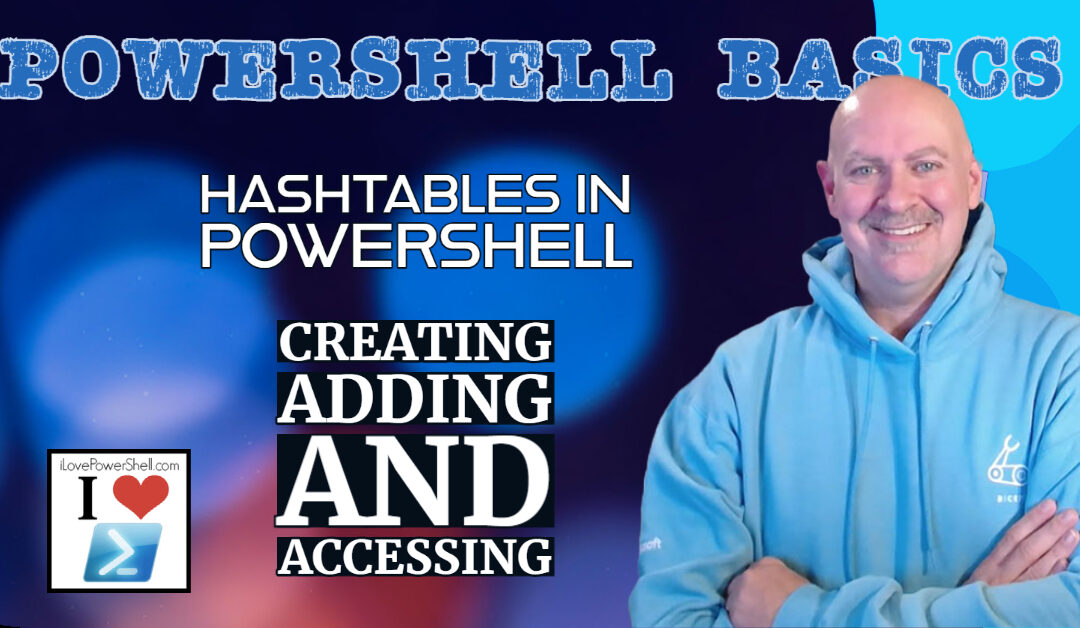PowerShell hashtables are a type of collection that allow you to store data in a key-value format. They’re incredibly useful for storing and retrieving data, and they’re a common feature in PowerShell scripts. In this article, we’ll take a look at how to create, add to, and access PowerShell hashtables.
Creating a Hashtable
To create a hashtable in PowerShell, you can use the @{} notation. Here’s an example:
$hashtable = @{
key1 = "value1"
key2 = "value2"
key3 = "value3"
}
This creates a hashtable with three key-value pairs. The keys are “key1”, “key2”, and “key3”, and the values are “value1”, “value2”, and “value3”. You can add as many key-value pairs as you want, as long as each key is unique. The hashtable is stored in a variable so that it can be accessed later.
Adding to a Hashtable Variable in PowerShell
To add a new key-value pair to a hashtable, you can use the Add() method. Here’s an example using the same variable from the previous example.
$hashtable.Add("key4", "value4")
This adds a new key-value pair to the hashtable. The key is “key4”, and the value is “value4”. If you try to add a key that already exists, the value will be updated to the new value.
Accessing a Hashtable
To access a value in a hashtable, you can use the key. Here’s an example:
$hashtable["key2"]
This will return the value associated with the key “key2”, which is “value2”. If you try to access a key that doesn’t exist, PowerShell will return $null.
Iterating Through a Hashtable in PowerShell
To iterate through a hashtable, you can use a foreach loop. Here’s an example:
foreach ($key in $hashtable.Keys) {
Write-Host "$key: $($hashtable[$key])"
}
This will loop through each key in the hashtable and write out the key and value. The output will look something like this:
key1: value1 key2: value2 key3: value3 key4: value4
PowerShell Hashtable vs. PowerShell Array
So even at the start we see that creating a hashtable is done with a “@{}”, while an array is created with a “@()”. That’s easy to get confused. So what exactly is the difference between a array and a hashtable? While both hashtables and arrays are used to store collections of data in PowerShell, there are some important differences to be aware of.
One key difference is the way that data is stored and accessed in each structure. In an array, data is stored in a linear fashion and accessed using a numerical index. In contrast, data in a hashtable is stored in key-value pairs and accessed using the key. This means that hashtables are more flexible than arrays when it comes to storing and retrieving data, especially when the data is non-sequential.
Another difference is the way that items are added or removed from each structure. In an array, items can be added or removed using the += operator or the Add() method. However, once an item is added to an array, its index is fixed and cannot be changed. In a hashtable, items can be added or removed using the += operator or the Add() method, but they can also be modified directly using the key. This allows for more fine-grained control over the data in the hashtable.
In general, if you need to store a collection of data in PowerShell and need to access it sequentially, an array is likely the best choice. If you need to store a collection of data and access it in a non-sequential or more flexible manner, a hashtable is likely the way to go.
Conclusion
PowerShell hashtables are a powerful way to store and retrieve data in a key-value format. They’re incredibly versatile, and they’re a great tool to have in your PowerShell toolbox. By following the steps outlined in this article, you should be able to create, add to, and access PowerShell hashtables with ease.
If you’re interested in learning more about PowerShell, especially if you’re towards the “beginner” side skill-wise, then you should check out our other articles in the PowerShell Basics category, where we cover a wide range of topics. And if you’re serious about improving your PowerShell skills, consider taking a course or working with a coach who can help you master the language and take your career to the next level.


